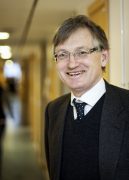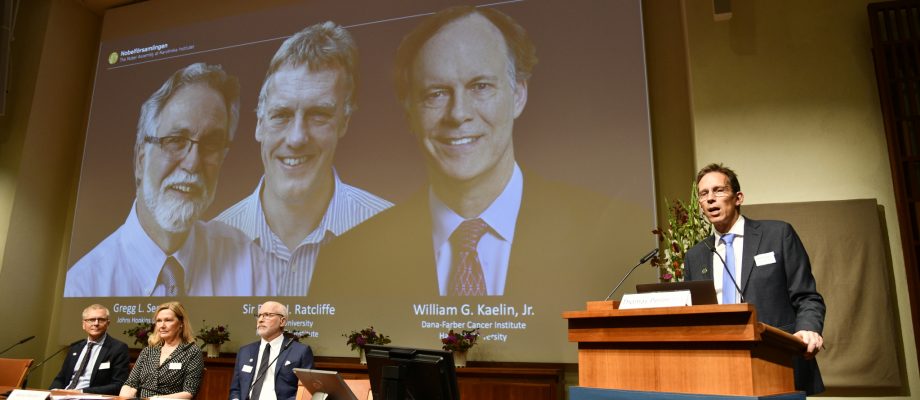NOBEL PRIZE. The recipients of this year’s Nobel Prize in Physiology or Medicine have identified how cells respond to varying levels of oxygen – a vital molecular machinery. The discoveries are described as groundbreaking.

“This is a superb prize for basic research,” declares Bengt Hallberg, professor of medical and physiological chemistry at Sahlgrenska Academy, University of Gothenburg.
Three researchers share the prize: William G. Kaelin, Jr., Sir Peter J. Ratcliffe and Gregg L. Semenza. They identified something that has long been unknown: how cells at the molecular level sense and through gene regulation adapt to changing oxygen availability.
Key concepts include the erythropoietin (EPO) gene and two different DNA-binding proteins called HIF-1α and ARNT. Based on their research, the laureates have been able solve the puzzle to understand which additional components affect the physiology of cells if there is a shortage of oxygen.
Training at high elevations
Bengt Hallberg uses training at high elevations as an example of how the machinery works. When athletes train at high elevations where they are subjected to air with a low oxygen content, the body responds by increasing the number of red blood cells. This improves the athletes’ ability to assimilate oxygen and improves their performance when they return to normal elevations.
“If there is little oxygen, the body senses this oxygen deficiency, and then it makes more red blood cells using HIF-1α and EPO. And that is what they have mapped out, how this works mechanically, and also how HIF-1α is degraded,” says Hallberg.
“But there are many more processes that oxygen regulates, including infections, anemia, healing of wounds and tumor growth, and they are interconnected in a very intricate way. To grow, a tumor needs oxygen, but HIF-1α also controls the formation of new blood vessels through another signaling pathway,” Hallberg adds.
Cancer and diabetes
Patrik Rorsman, professor of cellular endocrinology at Sahlgrenska Academy, University of Gothenburg, is very familiar with one of the three laureates who will share this year’s Nobel Prize. Peter Ratcliffe heads the Nuffield Department of Medicine at Oxford University, the large research department where Patrik Rorsman continues to head a smaller research team.

“The department Peter Ratcliffe heads in Oxford is as large as a small Swedish university. He is an impressive person, who also works clinically as a doctor. There has been speculation for a long time about whether he would receive the Nobel Prize in Medicine for discovering how cells sense and adapt to oxygen availability,” says Rorsman, who is pleased with Peter Ratcliffe’s selection.
Discovering how cells metabolize oxygen has great importance for cancer research. Researchers around the world are now working to find ways to use the mechanism to suppress tumors.
But in Patrik Rorsman’s research domain, diabetes, the prize-winning discoveries also have great importance. One theory maintains that the mechanisms now recognized with the Nobel Prize accelerate a vicious cycle in beta cells, which may explain why type 1 diabetes is a progressive disease:
“The beta cells really need a lot of oxygen to produce insulin, and if you affect this mechanism, you induce diabetes,” says Rorsman. “We have studied a mitochondrial enzyme that accumulates during diabetes and becomes less active. We think that may help explain why diabetes is often a mild illness in the beginning but worsens over time.”
Read more about this year’s Nobel Prize in Physiology or Medicine in the Nobel Assembly’s press release: https://www.nobelprize.org/prizes/medicine/2019/60410-press-release-swedish/
TEXT: MARGARETA GUSTAFSSON KUBISTA / ELIN LINDSTRÖM











